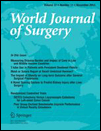Outcome of Surgical Resection as a First Line Therapy in T3 Non-small Cell Lung Cancer Patients
Abstract
Background
The T3 category of the 7th Edition of the TNM classification of non-small cell lung cancer (NSCLC) has added two factors that do not appear in the 6th Edition, large tumor size (>7 cm) and pulmonary metastasis of the same lobe. These factors are considered to have different biological and clinical features. In the present study we assessed the outcome of surgical resection as a first line therapy for T3 NSCLC.
Methods
A total of 145 patients who were diagnosed according to the TNM 7th Edition with pathologic T3 NSCLC received surgical resection in our institution as a first line treatment. The outcomes of their treatment were analyzed.
Results
The 5-year survival rate was 46.9 %. On the basis of the 6th TNM Edition, the 5-year survival rate was 63.1 % for patients diagnosed with T2 disease (large tumor size), 44.3 % for patients diagnosed with T3 disease, and 33.1 % for patients diagnosed with T4 disease (pulmonary metastasis of the same lobe). There were no significant correlations between these categories and overall survival (OS). Nevertheless, 6th Edition T factors were found to be significantly correlated with lymph node status (p < 0.01). The univariate analyses showed that age, lymph node metastasis, and curative resection had significant effects on OS. In addition, the multivariate analysis identified age and N factor as independent prognostic factors in this cohort.
Conclusions
Indications for surgical resection as a first line therapy in T3 NSCLC should be based on N factors and patient age. Lymph node metastasis, especially N2 disease, was increasingly frequent in patients with 6th Edition T classifications.




